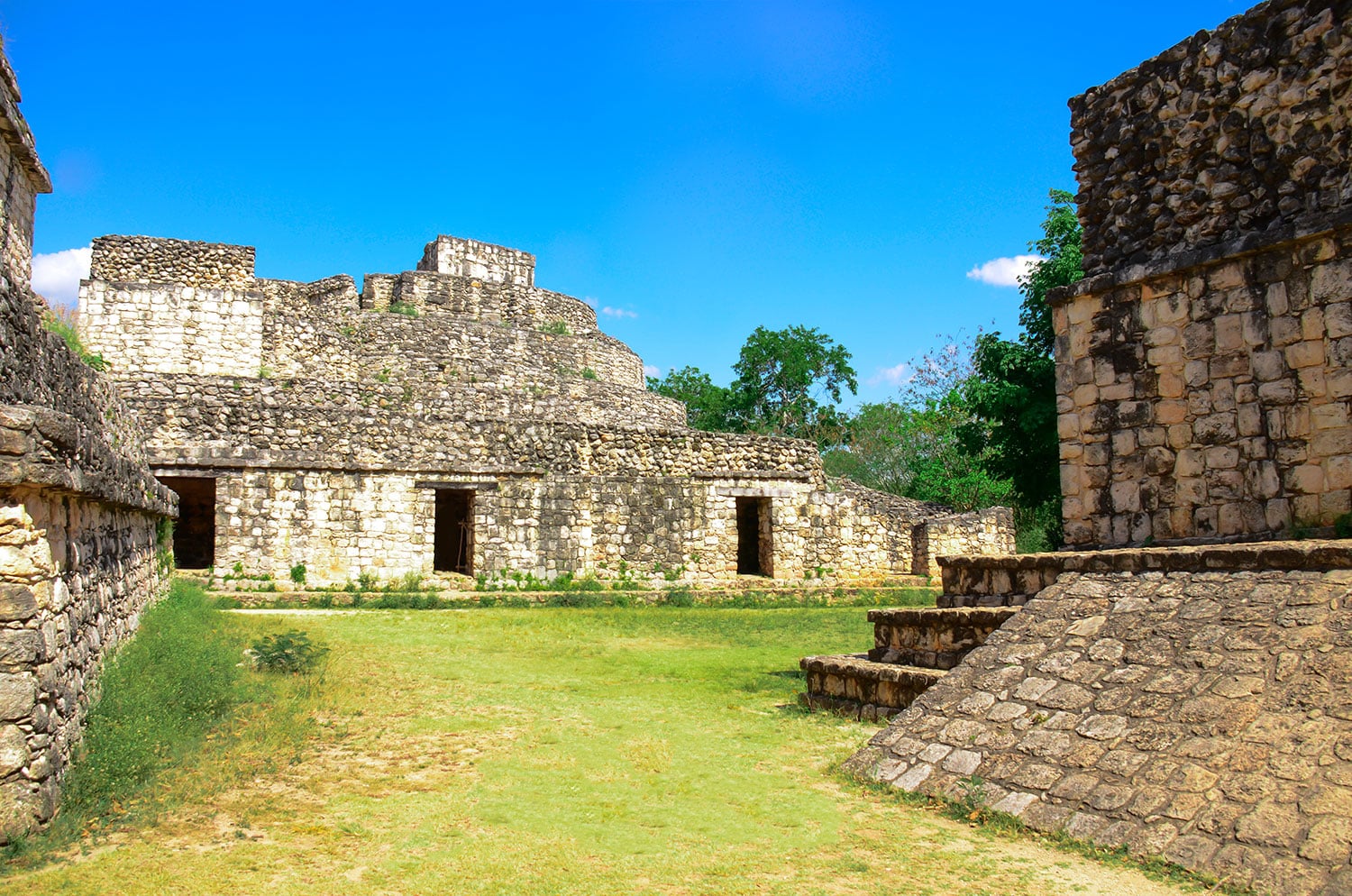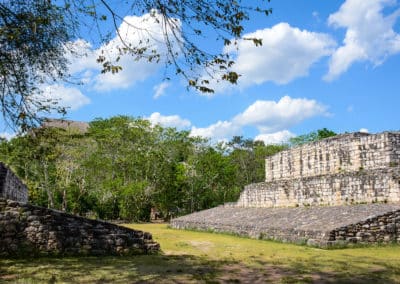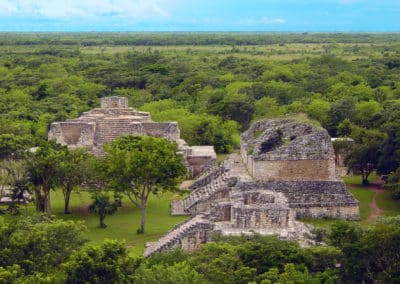
Ek Balam
Ekʼ Balam is a Yucatec-Maya archaeological site within the municipality of Temozón, Yucatán, Mexico. It lies in the Northern Maya lowlands, 25 kilometres (16 mi) north of Valladolid and 56 kilometres (35 mi) northeast of Chichen Itza. From the Preclassic until the Postclassic period, it was the seat of a Mayan kingdom.
The site is noted for the preservation of the plaster on the tomb of Ukit Kan Lek Tokʼ, a king buried in the side of the largest pyramid.
Ekʼ Balam was occupied from the Middle Preclassic through the Postclassic, although it ceased to thrive as a major city past the Late Classic. Beginning in the Late Preclassic, the population grew and the city expanded throughout the following periods. It eventually became the capital of the polity that controlled the region around the beginning of the Common Era.
At its height from 770 to 840 CE, Ekʼ Balam provides a rich resource of information for understanding northern Classic cities, due to the poor preservation of many other notable northern Maya sites (e.g. Coba, Izamal, and Edzna). It was during this height that the Late Yumcab ceramic complex (750-1050/1100 CE) dominated the architecture and pottery of Ekʼ Balam. The population decreased dramatically, down to 10% of its highest, during the Postclassic period as Ekʼ Balam was slowly becoming vacant. There are several theories to why it was eventually abandoned and to the degree of haste at which it was abandoned.
Ek Balam is mentioned in a late-sixteenth-century Relación Geográfica, an official inquiry held by the colonial government among local Spanish landowners. It is reported to have belonged to a kingdom called ‘Talol’, founded by an Ekʼ Balam, or Coch Cal Balam, who had come from the East. Later, the region was dominated by the aristocratic Cupul family.















